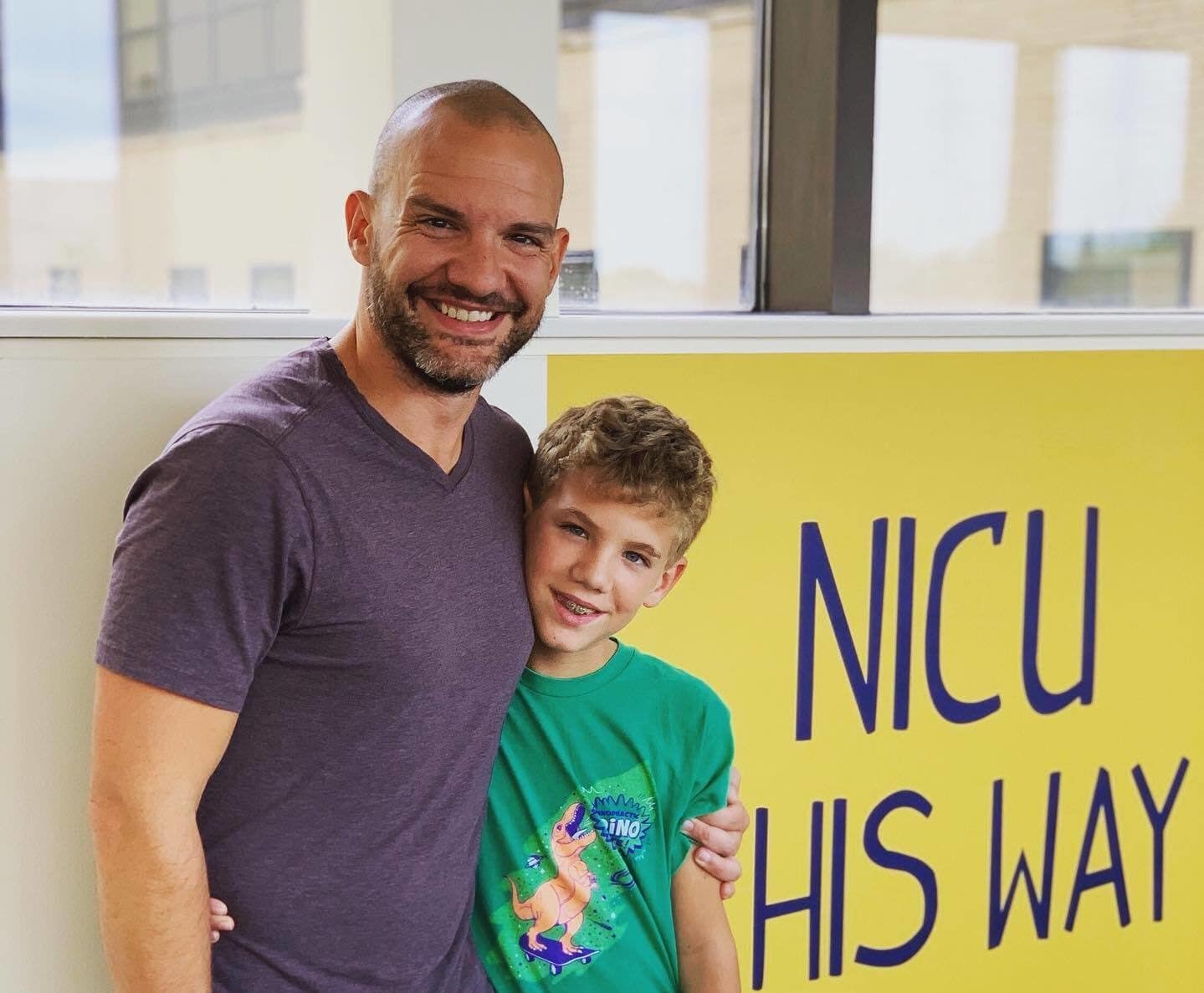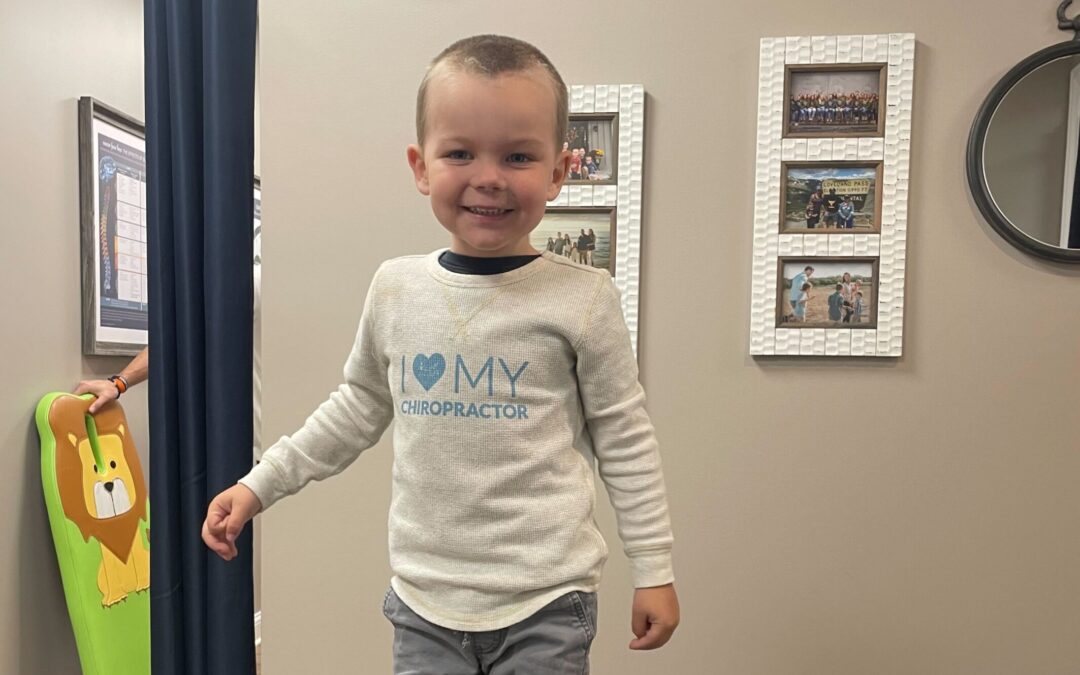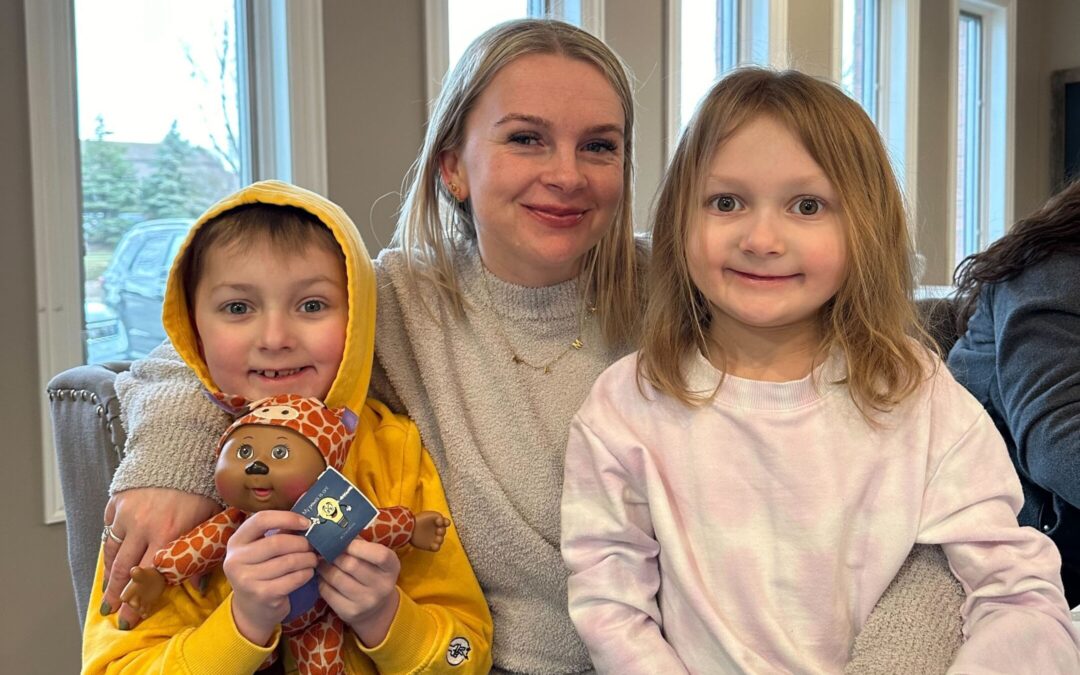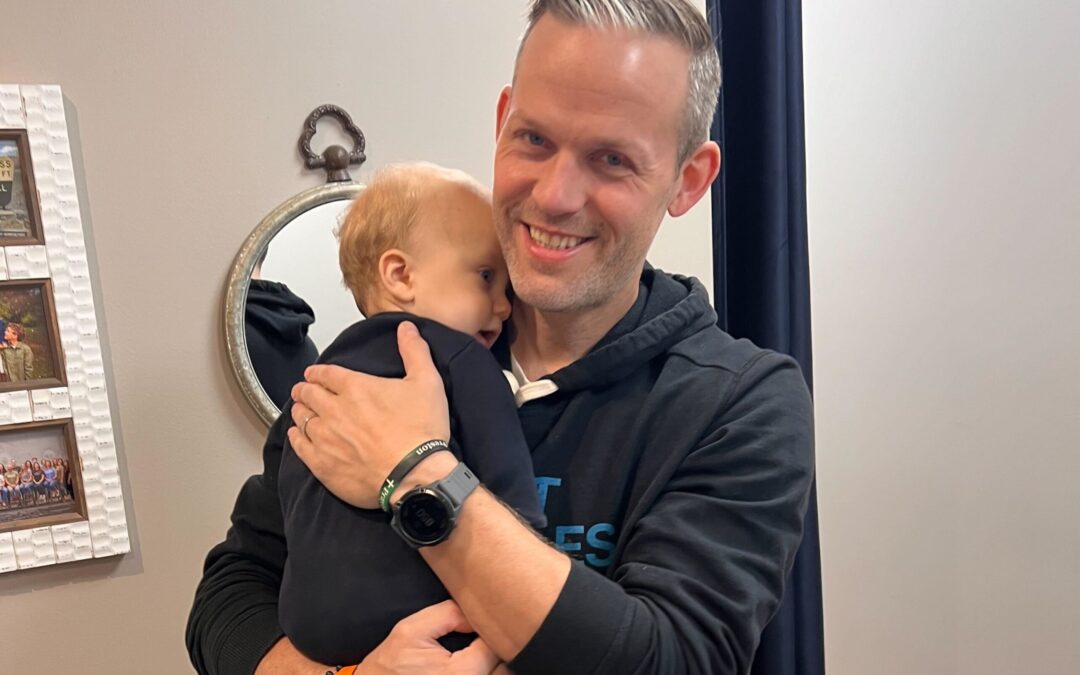It was Memorial Day (May 25th) back in 2009. Instead of celebrating at a family BBQ like most people were that day, we were racing behind an ambulance heading from one hospital to another. Soon that ambulance would not be fast enough, so things turned to a helicopter taking our hours-old infant son Oliver to a Level 3 NICU hospital an hour away.
Oliver’s story is the perfect example of birth trauma. His birth was extremely fast and ended up being very traumatic. He was delivered on the very first push, shooting out like a rocket almost immediately after my wife began pushing. Our birth team (midwife, doula, etc.) was not prepared and, simply put, did not catch him, resulting in birth trauma and physical injury to his brainstem and neck.
My wife delivered him on “all fours” on the bed, leading to Oliver falling and landing with his head and neck flexed on the bed. Essentially, whiplash-like birth trauma to the most precious and important aspect of human health – the brainstem, spinal cord, and autonomic nervous system.
Since that exact area of the brain and nervous system are responsible for activating and regulating vital life functions such as breathing and heartbeat, he had neither from the birth trauma.
There was no cry, no movement, nothing. He was blue (cyanotic) and had no heartbeat.
Immediately after his birth trauma, the medical team hooked him up to oxygen and emergency life-saving medical technology, and immediately I did something that happens in maybe 1 out of millions and millions of births – I flipped him over, umbilical cord still attached, and made a chiropractic adjustment to the part of his nervous system known to activate breathing, heartbeat, and fluid release!
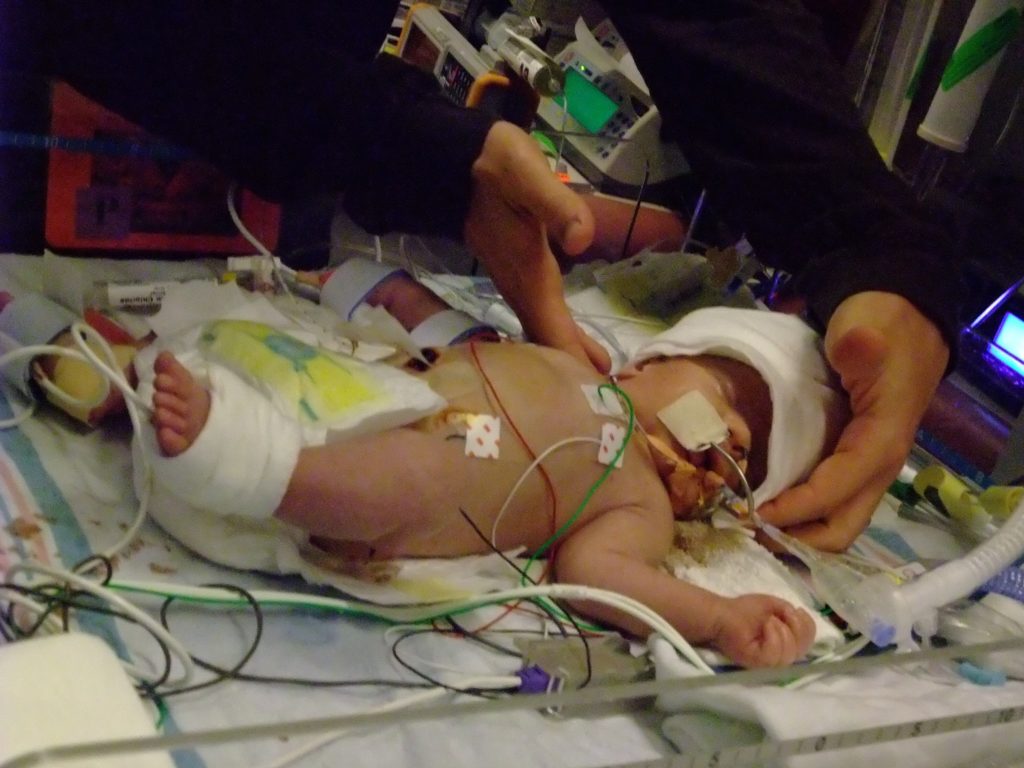
Yep, thank God for the medical team… and thank God that I was a Pediatric Chiropractor who had spent the last 2 years of my life studying all things birth trauma and its role in disrupting and damaging brain and neurological function.
This is the sort of story that only God can bring to life. We saw both the incredible life-saving results of modern medicine and the amazing life-restoring benefits of chiropractic care!
What is Birth Trauma?
Birth trauma is any trauma or injury, most commonly physical, that happens during the labor and delivery process and often leads to lifelong health challenges, disabilities, and neurological problems for the child.
Birth trauma is the single most overlooked causative factor of the massive rise in chronic illness in our kids today. Of course, it leads to short-term challenges like lowered APGAR scores and difficulty nursing, but the real issue is the long-term health and neurological development consequences of birth trauma.
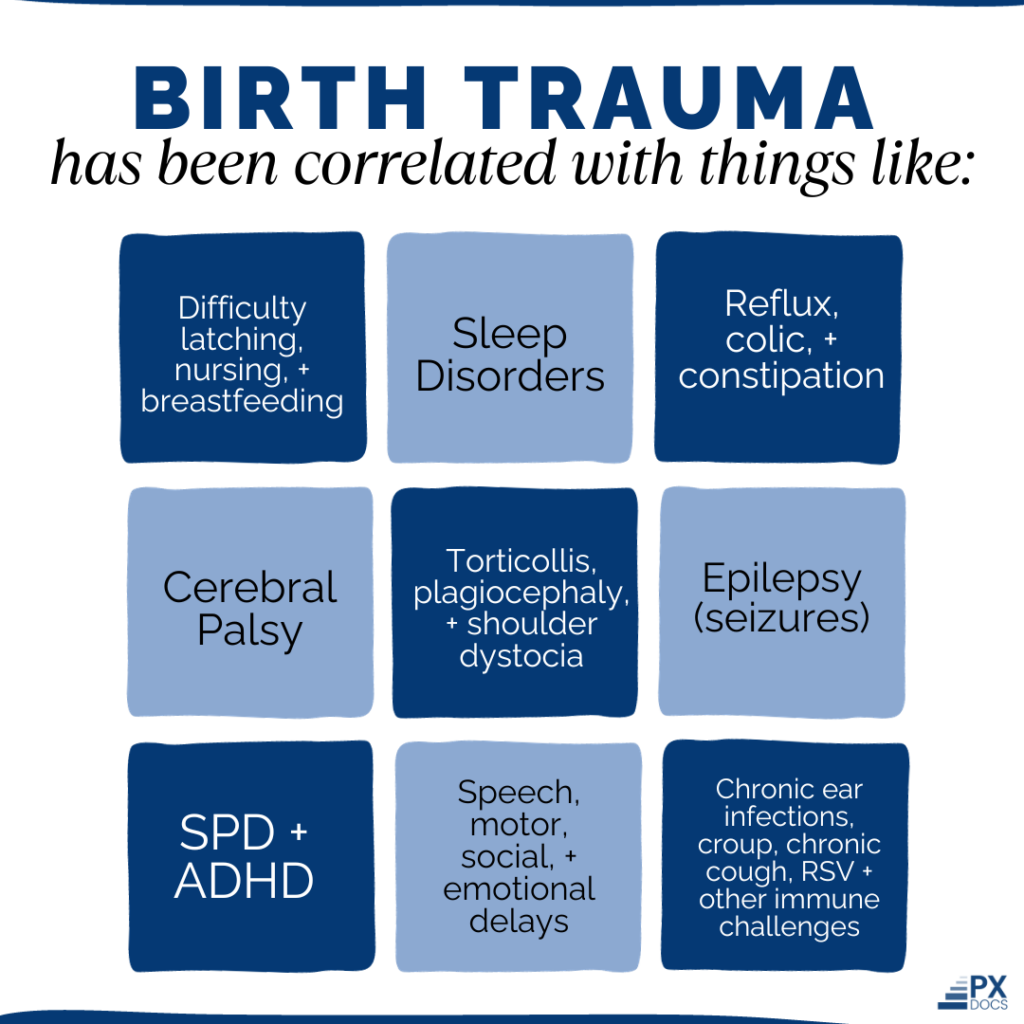
We see birth trauma correlated with things like:
- Difficulty latching, nursing, breastfeeding
- Sleep disturbances and disorders
- Reflux, colic, constipation
- Torticollis, plagiocephaly, shoulder dystocia, etc.
- Cerebral palsy
- Epilepsy (seizures)
- Autism, sensory processing disorders, ADHD, and other neurodevelopmental challenges
- Speech, motor, social, and emotional delays, and disorders
- Chronic ear infections, croup, chronic cough, RSV, and other immune challenges
What Causes Birth Trauma?
Birth trauma is most commonly physical in nature. It can come from all the various forms of birth intervention like epidurals, inductions, forceps or vacuum extraction, fetal cord monitoring, and c-section deliveries – such as in Landon’s case.
Other common risk factors that may lead to birth trauma or birth injury include:
- The position of the baby
- High levels of medical intervention
- A large baby
- Lengthy or very short painful labor
- An unusual or small-shaped pelvis
Additionally, it’s important to note that birth trauma can vary significantly in severity. Most birth trauma cases go completely undetected and unnoticed by the traditional medical team.
To keep it quite simple, the longer labor and delivery go on, and the more intervention starts to stack up, the more likely birth trauma will occur.
What are the Effects of Birth Trauma?
As listed above, the negative health effects of birth trauma on the child are far-reaching and can be connected to almost every pediatric health condition.
The reason for this is quite simple to understand – the system most negatively affected by physical (and toxic) birth trauma is the central or autonomic nervous system. And the nervous system controls and coordinates every other tissue, organ, and cell in the body.
When the function of this system is altered and thrown off course right in the very first moments of life from birth trauma, it creates a condition known as dysautonomia.
The real key to all of these early and later life health challenges are tied to a very important nerve called the vagus nerve. The Vagus Nerve is responsible for coordinating our heart rate, breathing, digestion, immune function, social and emotional regulation, and so much more.
The Vagus Nerve is most easily injured via birth trauma simply because of its anatomical location.
This vitally important nerve originates (comes from) the lower brainstem area and then makes its way down through the cervical spine (neck) and all the way into the thorax and abdomen. This is why it’s long been called the “wandering” nerve.
This physical injury to the Vagus Nerve, brainstem, and other areas of the nervous system via birth trauma is what Pediatric Chiropractors call a subluxation.
Natural, Drug-Free Pediatric Chiropractic Care for Birth Trauma
“There is a 99% chance Oliver will have a life full of neurological damage and challenges such as seizures, cerebral palsy, and autism. He’ll likely never walk and never talk.”
That was what the Harvard-trained medical neurologist at Lutheran General Hospital in Chicago told us once Oliver had made it out of his three (3) life-saving surgeries from birth trauma.
I’ll never forget that conversation, the room we were in, and the look of despair on my beautiful wife’s face when we heard that prognosis.
But God had a different plan for Oliver… because he had a different plan for me.
“I don’t believe in chiropractic.”
Those are words I’ve heard again and again in my career as a Pediatric and Family Chiropractor. Not nearly as much anymore today, thankfully, as parents are getting more educated and informed about birth trauma and chiropractic care and feeling more empowered to make the sort of healthcare decisions they’ve long wanted to. But I’ve heard it plenty nonetheless.
I’ve got to tell you, moms and dads – I didn’t “believe” those medical neurologists when they told me my son was certain to have a life full of seizures and neurological disabilities from birth trauma.
Why? Because I knew what they didn’t. I knew that neurologically-focused chiropractic adjustments could and would restore full function to his brain, brainstem, vagus nerve, and autonomic nervous system.
I knew he was subluxated and had the worst case of dysautonomia and birth trauma I had ever seen (and likely ever would). But I also knew this – I could help.
While he had experienced true brain injury and damage from birth trauma (his original MRI and EEG findings were so bad that only 20% of children with that level of damage even live past age one), he also had one very important thing on his side – neuroplasticity (the brain and nervous system can heal).
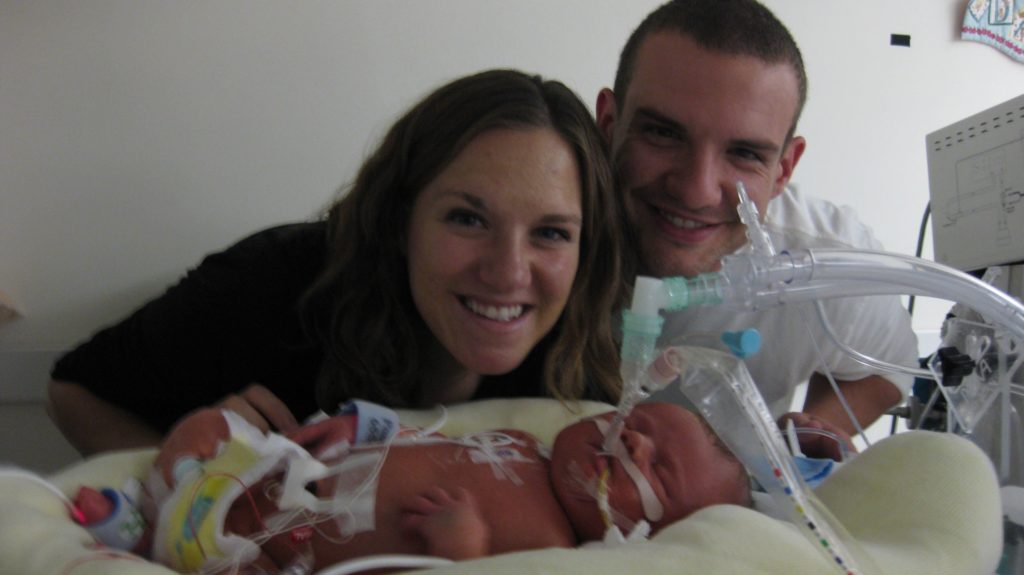
Chiro Miracle Man
I provided neurologically-focused, tonal adjustments to Oliver’s nervous system multiple times per day during his 6-week NICU stay post-birth trauma. Then, once home, I adjusted him daily for months on end.
As an infant, he was not in the clear from the consequences of birth trauma. He struggled with every cold, seasonal change, teething, and growth spurt. Each time, he’d get congested and have to battle through croup and RSV.
We had already gotten him off all seizure medications before we left the hospital, so the last thing we wanted to do was turn to these run of medications for his immune system and leave him with immune suppression and weakness for life.
We fought through. And we made it through!
That picture was taken as we visited the same NICU that saved his life to help support and care for another infant and family in need a few years back.
Oliver never had another seizure. His EEG and MRI completely cleared up. His cardiac and respiratory function is 100% perfect. His digestive and immune systems are as strong as a bull (we live on a farm). His entire brain and neurodevelopment have also been on point!
He loves God, is an A+ student, an amazing athlete, and the most humble, heart-centered, and helpful kid out there! He’s our Chiro Miracle Man!
Get Help Now
If you suspect that some or all of your child’s health challenges are possibly related to birth trauma and subluxation, you at least deserve to find out!
Our PX Docs are the only trained professionals in all of healthcare who really know how to dig deep enough to look for birth trauma and then be able to help.
Learn more about the PX Docs Clinical Process and visit our PX Docs Directory here to get your consult scheduled right away with a local PX Doc in your area!

